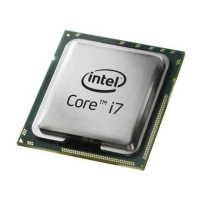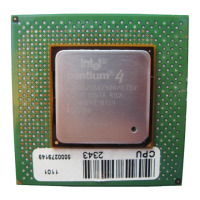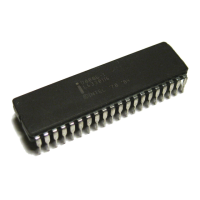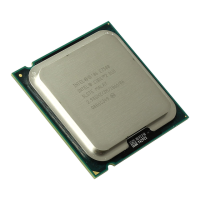Thermal/Mechanical Specifications and Design Guide 95
PECI Interface
7.1.9 DTS Temperature Data
7.1.9.1 Format
The temperature is formatted in a 16-bit, 2’s complement value representing a number
of 1/64 degrees centigrade. This format allows temperatures in a range of ±512 °C to
be reported to approximately a 0.016 °C resolution.
7.1.9.2 Interpretation
The resolution of the processor’s Digital Thermal Sensor (DTS) is approximately 1 °C,
which can be confirmed by a RDMSR from the IA32_THERM_STATUS MSR where it is
architecturally defined. The MSR read will return only bits [13:6] of the PECI
temperature sensor data defined in Figure 7-45. PECI temperatures are sent through a
configurable low-pass filter prior to delivery in the GetTemp() response data. The
output of this filter produces temperatures at the full 1/64 °C resolution even though
the DTS itself is not this accurate.
Temperature readings from the processor are always negative in a 2’s complement
format, and imply an offset from the processor T
jmax
(PECI = 0). For example, if the
processor T
jmax
is 100 °C, a PECI thermal reading of -10 implies that the processor is
running at approximately 10 °C below T
jmax
or at 90 °C. PECI temperature readings
are not reliable at temperatures above T
jmax
since the processor is outside its operating
range and hence, PECI temperature readings are never positive.
The changes in PECI data counts are approximately linear in relation to changes in
temperature in degrees centigrade. A change of ‘1’ in the PECI count represents
roughly a temperature change of 1 degree centigrade. This linearity is approximate and
cannot be guaranteed over the entire range of PECI temperatures, especially as the
offset from the maximum PECI temperature (zero) increases.
Figure 7-46. Temperature Filtering
The processor digital thermal sensor (DTS) provides an improved capability to monitor
device hot spots, which inherently leads to more varying temperature readings over
short time intervals. Coupled with the fact that typical fan speed controllers may only
read temperatures at 4Hz, it is necessary for the thermal readings to reflect thermal
trends and not instantaneous readings. Therefore, PECI supports a configurable low-
pass temperature filtering function that is expressed by the equation:
T
N
= (1-α) * T
N-1
+ α * T
SAMPLE
where T
N
and T
N-1
are the current and previous averaged PECI temperature values
respectively, T
SAMPLE
is the current PECI temperature sample value and the variable ‘α’
= 1/2
X
, where ‘X’ is the ‘Thermal Averaging Constant’ that is programmable as
described in Section 7.1.2.7.9.
Figure 7-45. Temperature Sensor Data Format
MSB
Upper nibble
MSB
Lower nibble
LSB
Upper nibble
LSB
Lower nibble
S x x x x x x x x x x x x x x x
Sign Integer Value (0-511) Fractional Value (~0.016)
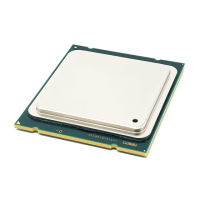
